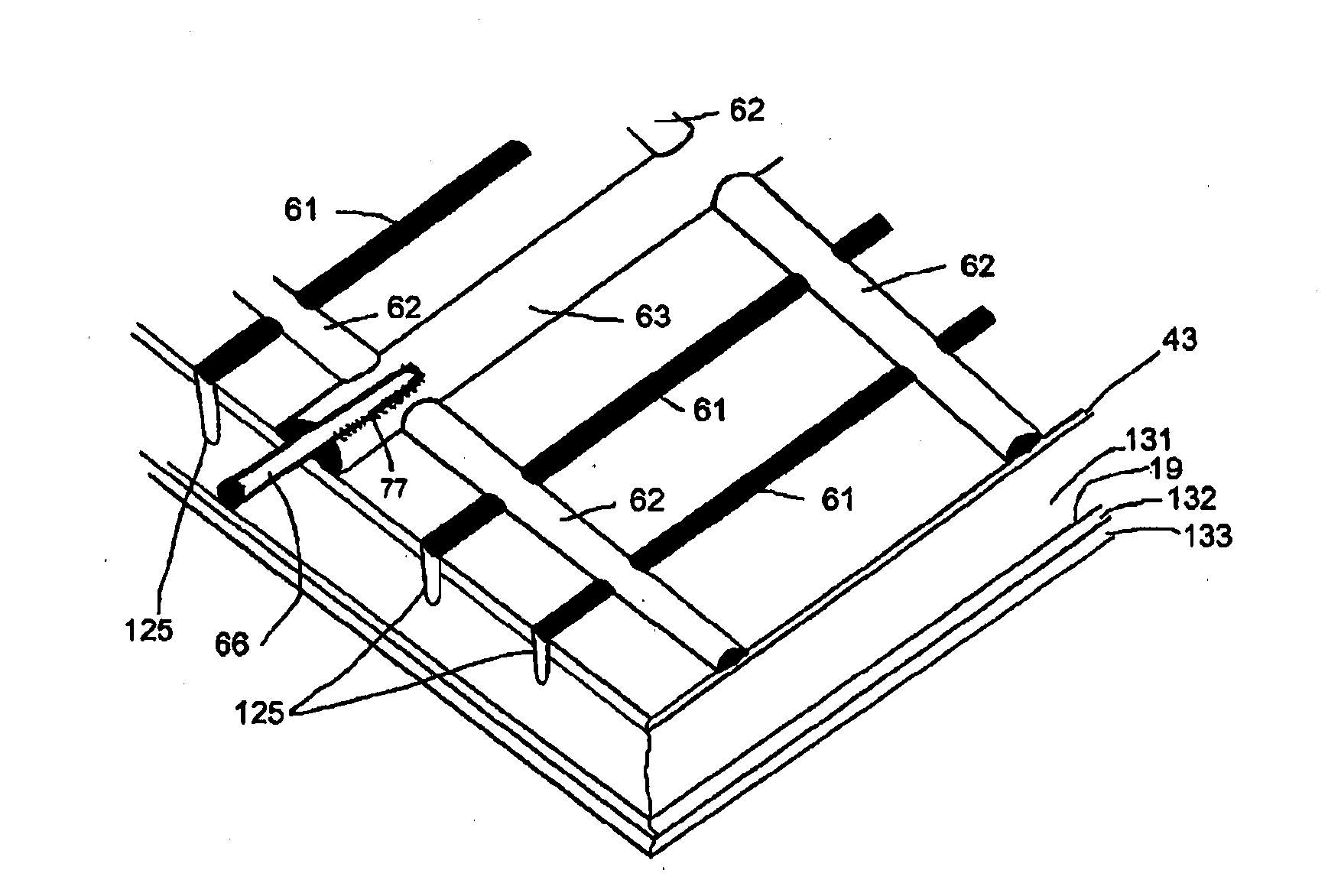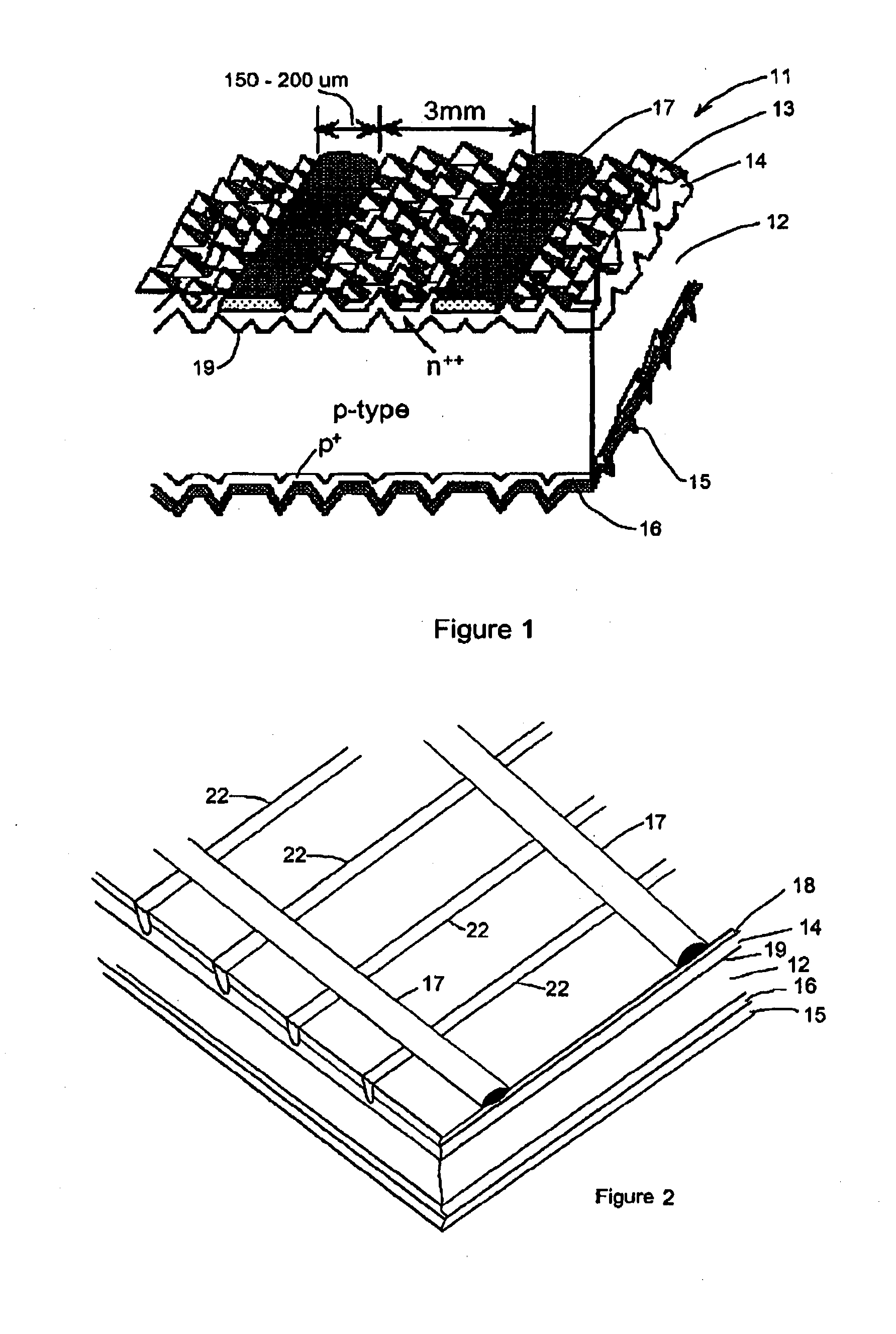Hybrid solar cell contact
a solar cell and hybrid technology, applied in the direction of sustainable manufacturing/processing, climate sustainability, semiconductor devices, etc., can solve the problems of inability to reliably screen-print metal lines of width less than 100 microns in large-scale commercial production, the spacing is too large to allow the use of emitters with sheet resistivity above and the general response of emitters with sheet resistivity below 100 ohms per square to short wavelength light, etc., to preven
- Summary
- Abstract
- Description
- Claims
- Application Information
AI Technical Summary
Benefits of technology
Problems solved by technology
Method used
Image
Examples
example 1
[0076]A typical processing sequence to form these hybrid contact devices is as follows:[0077]1. Surface etching and texturing of the semiconductor substrate;[0078]2. Front surface diffusion to form an emitter with sheet resistivity of at least 90 ohms / square[0079]3. PhosphoSilicate Glass removal and rear surface etch for edge junction isolation;[0080]4. PECVD deposition of top surface dielectric layer 43 such as silicon nitride or silicon oxynitride or silicon dioxide or aluminium oxide, etc;[0081]5. Screen-print front and rear metal contacts 62, 63 at a spacing of 3 to 6 mm (grid on front)[0082]6. Firing of screen-printed metal contacts at a temperature in the range of 750-850° C., simultaneously creating the rear field 16;[0083]7. Coat the surface of the dielectric layer 43 with phosphoric acid 91 as a dopant source and pattern the surface with a laser 92, while simultaneously melting the silicon to allow it to be heavily doped with phosphorus, producing narrow parallel doped line...
example 2
[0087]An alternative processing sequence to form these hybrid contact devices is as follows:[0088]1. Surface etching and texturing of the semiconductor substrate;[0089]2. Front surface diffusion to form an emitter 44 with sheet resistivity of at least 90 ohms / square[0090]3. PhosphoSilicate Glass removal and rear surface etch for edge junction isolation;[0091]4. PECVD deposition of surface dielectric layer 43 such as silicon nitride or silicon oxynitride or silicon dioxide or aluminium oxide, etc;[0092]5. Coat the surface of the dielectric layer 43 with phosphoric acid 91 as a dopant source and pattern the surface with a laser 92, while simultaneously melting the silicon to allow it to be heavily doped with phosphorus, producing narrow parallel doped lines 65 of exposed silicon of width 3-30 microns and spaced 0.5 to 1.5 mm apart;[0093]6. Screen-print front and rear metal contacts 62, 63 at a spacing of 3 to 6 mm whereby the silver fingers on the front are printed perpendicular or at...
PUM
 Login to View More
Login to View More Abstract
Description
Claims
Application Information
 Login to View More
Login to View More - R&D
- Intellectual Property
- Life Sciences
- Materials
- Tech Scout
- Unparalleled Data Quality
- Higher Quality Content
- 60% Fewer Hallucinations
Browse by: Latest US Patents, China's latest patents, Technical Efficacy Thesaurus, Application Domain, Technology Topic, Popular Technical Reports.
© 2025 PatSnap. All rights reserved.Legal|Privacy policy|Modern Slavery Act Transparency Statement|Sitemap|About US| Contact US: help@patsnap.com



